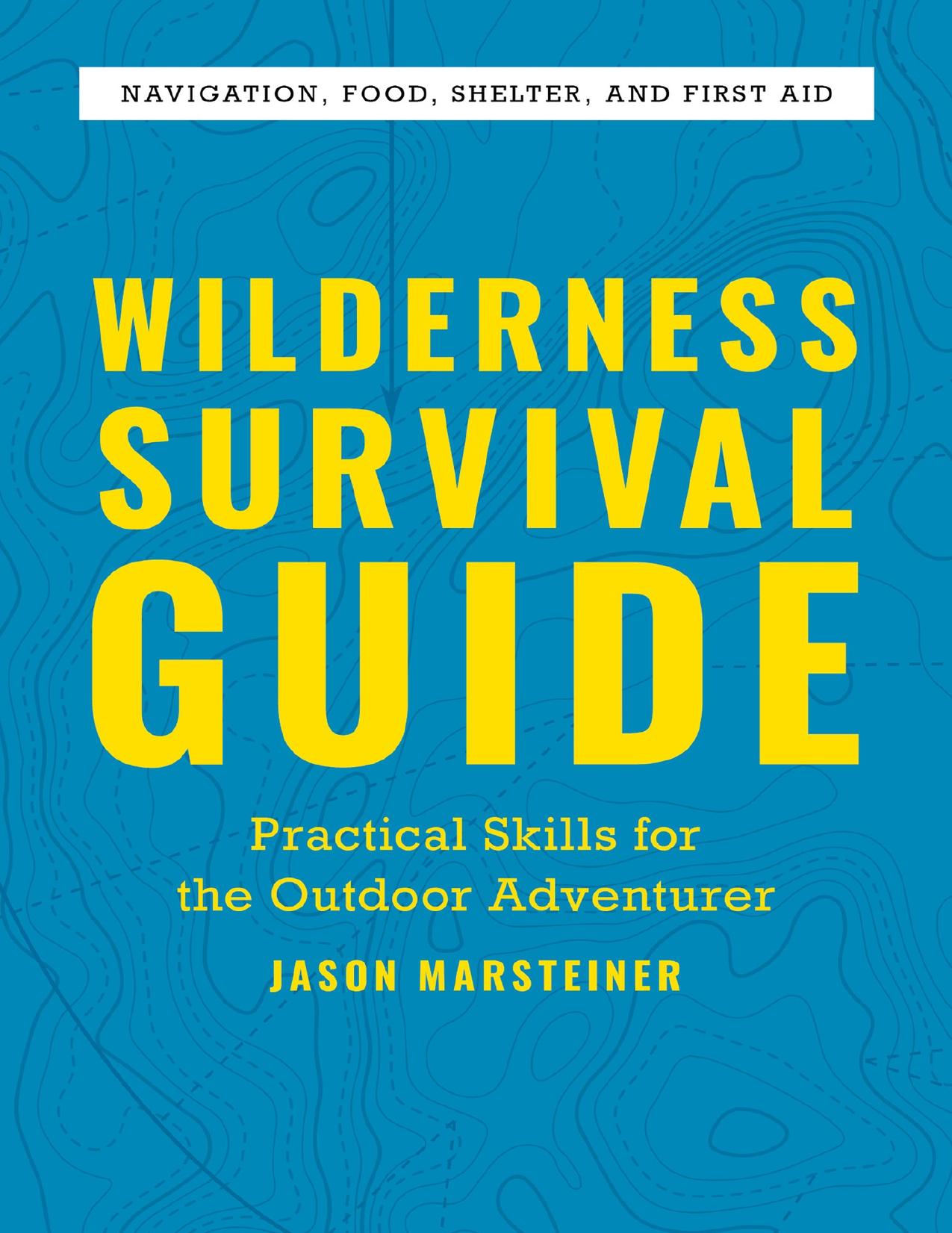Wilderness Survival Guide: Practical Skills for the Outdoor Adventurer by Jason Marsteiner

Author:Jason Marsteiner [Marsteiner, Jason]
Language: eng
Format: azw3, epub, pdf
Publisher: Rockridge Press
Published: 2021-02-15T16:00:00+00:00
ESSENTIAL KNOTS
Clove hitch
Square knot
Lashing knot
Siberian hitch (Evenk hitch)
Arbor knot (Canadian jam knot)
Bowline knot
Poacherâs knot
Cow hitch (larkâs head)
CHAPTER FIVE
LIVING OFF THE LAND
Whether youâre in the wilderness for a short overnight hike or testing your skills on an extended adventure, youâll need to master some basic skills to live off the land. Foraging for food and creating tools using natural resources has become all but a lost art. In this chapter, I hope to inspire you to continue learning about all that can be found and utilized in the natural environment.
Bird and Small Animal Traps
Hunting and trapping are highly regulated. Know your local laws before you attempt either. Huntingâactively pursuing an animal with a projectile weaponâcan be rewarding but takes a lot of energy, so trapping is a better alternative for procuring food for survival. If you opt to hunt, do so in the early morning and just before sundown.
When trapping, set and check your traps during the day; animals will most likely be trapped at night. Do not take setting traps lightly. Traps are indiscriminate and will harm anything that triggers them, including domestic and endangered animals as well as humans.
Two main types of traps are the passive trap , a snare wire or pit with no moving parts, and an active trap like a spring pole or counterweight, which has moving parts.
Most active traps consist of a support structure, a trigger or bait stick, a toggle, and a killing device. The support structure holds everything in place, the toggle moves in some direction to activate the killing device, and the trigger stick keeps the toggle from moving until itâs supposed to move. The following section outlines five trap types for different environments and prey.
TRAP TIPS
⢠Trapping is a numbers game. If you are trapping food to survive, build as many traps as you can and set new traps every day until you are constantly catching prey.
⢠Build a variety of traps to find out what works best. If a trap stops working, change it up or move traps around.
⢠Check your traps often. You will be competing with scavengers, so check your traps with caution. Check them first thing every morning and every night before the sun goes down.
⢠Trapping takes practice. The first time you build and set a trap will take a considerable amount of time. Youâll get better; donât give up.
⢠Mark or map your traps so that you can easily find them.
⢠Bait your traps accordingly. Pay attention to what animals are eating and use their food as bait. Manmade bait, such as peanut butter, is not always your best option.
⢠Use entrails as bait for your next trap. Entrails will attract birds, larger scavengers, or predators (which are edible, too), and most rodents are cannibalistic and omnivorous.
⢠Set your traps to the side of game trails. Setting your traps directly on a large game trail is usually not productive.
⢠Set your traps near water sources, especially on small trails that lead to water sources.
⢠Take a smoke bath before setting or checking your traps to mask your human scent.
Download
Wilderness Survival Guide: Practical Skills for the Outdoor Adventurer by Jason Marsteiner.epub
Wilderness Survival Guide: Practical Skills for the Outdoor Adventurer by Jason Marsteiner.pdf
This site does not store any files on its server. We only index and link to content provided by other sites. Please contact the content providers to delete copyright contents if any and email us, we'll remove relevant links or contents immediately.
In a Sunburned Country by Bill Bryson(3452)
Annapurna by Maurice Herzog(3398)
How to Read Nature by Tristan Gooley(3213)
Dangerous Girls by Haas Abigail(2925)
SAS Survival Handbook by John 'Lofty' Wiseman(2634)
The Lost Art of Reading Nature's Signs by Tristan Gooley(2586)
In the Woods by Tana French(2498)
The Stranger in the Woods by Michael Finkel(2371)
Food and Water in an Emergency by Food & Water In An Emergency(2309)
Guns, Germs and Steel by Diamond Jared(2240)
Everest the Cruel Way by Joe Tasker(2210)
Wild: From Lost to Found on the Pacific Crest Trail by Cheryl Strayed(2179)
Backpacker the Complete Guide to Backpacking by Backpacker Magazine(2152)
Trail Magic by Trevelyan Quest Edwards & Hazel Edwards(2106)
Ultimate Navigation Manual by Lyle Brotherton(2082)
Sea Survival Handbook by Keith Colwell(2081)
Welcome to the Goddamn Ice Cube by Blair Braverman(1933)
Birds of the Pacific Northwest by Shewey John; Blount Tim;(1902)
The Last Flight by Julie Clark(1881)
